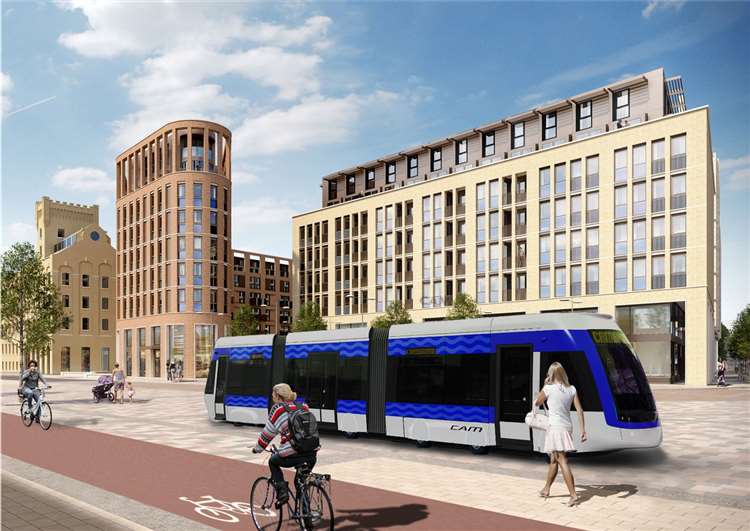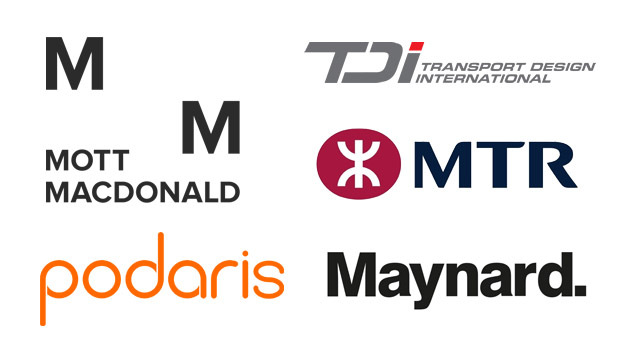
Podaris joins a Mott MacDonald led consortium that has been appointed by Cambridgeshire & Peterborough Combined Authority to develop bold, innovative, conceptual designs to help inform and potentially transform the delivery of the Cambridgeshire Autonomous Metro (CAM).
Appointed alongside two other suppliers, Podaris and the Mott MacDonald consortium have been challenged to propose technologies, innovations, designs, operational systems and commercial ideas which could provide an in-the-round solution to the delivery of the CAM.
Mayor of Cambridgeshire and Peterborough, James Palmer, said: “The CAM will bring the world-leading, innovative and transformational public transport network that this region needs to continue to thrive.
“This challenge is a test to the very best brains in the market to help pioneer what the CAM will look like and how it can best be delivered. I’m clear that we want the CAM to offer our region the kind of high-quality public transport normally reserved for the biggest cities.”
“We can be a trailblazer for the future of transport in smaller cities and their regions and there is no better place in the world to be a first-mover than Cambridgeshire and Peterborough. Once again, we want this region to lead the way.”
“The delivery of the conceptual designs in March will be another important milestone for CAM.”
What is the Cambridgeshire Autonomous Metro (CAM)?
The Cambridgeshire Autonomous Metro (CAM) is a project started by the Cambridgeshire & Peterborough Combined Authority to develop an innovative high quality public transport network which will connect towns, villages, major employment sites and the city of Cambridge.

How will Podaris help?
Podaris was founded with the aim of creating a system that provided real-time collaboration transport planning capabilities using parametric models through a highly intuitive interface. As Podaris can model the characteristics of individual transport systems with a very high degree of fidelity, it is perfect for rapidly modelling and analysing innovative and novel transport systems like CAM. Historically, early-stage studies for projects like the Cambridgeshire Autonomous Metro had to rely on high-level “rules of thumb”, such as average line speed or cost per kilometer, as the basis of their cost/benefit calculations. We now offer a better way and our web-based platform has been used throughout the world to help the early stage planning for projects of all sizes.

Together with Mott MacDonald, MTR, Transport Design international, and Maynard we have been tasked with a conceptual design challenge. The challenge is not intended to find the conclusive delivery solution for CAM, but will offer important input to challenges in the development of the programme and build interest among suppliers more widely, who at some stage may want to bid on future phases of work. The designs will support the better understanding of how existing and emerging public transport modes, models and technologies could be applied to the CAM. The process will also encourage bold thinking which pushes boundaries, while remaining deliverable and offering value for money.
The scope of the designs the suppliers will be expected to cover include:
-
The CAM vehicle: What type and size of proposed autonomous metro vehicles could be suitable, including considerations around guidance, operating systems and how it can be future-proofed against rapidly changing technology.
-
CAM infrastructure: What infrastructure the vehicle would run on, including the IT system and recommended approaches for their design, build, operation, safety assurance and maintenance.
-
Operations: How the CAM will run, and what the customer experience should be like.
-
Commercial relationships: Creative opportunities for revenue streams which will support the funding of the CAM.
-
The environment: Ensuring CAM is world leading in protecting the environment.
Nathan Koren, CEO, Podaris said: “The scope and ambition of the Cambridgeshire Autonomous Metro is the perfect opportunity for our technology to make a contribution, and we are excited to work with the extraordinary team which Mott MacDonald has assembled.”
Stephen Luke, practice leader light rapid transit, Mott MacDonald, said: “Our team is delighted to have been selected to support the Cambridgeshire & Peterborough Combined Authority in developing solutions for the delivery of CAM. This truly is an ambitious and unique scheme requiring a careful balance of proven engineering, innovation and creativity.”
Steve Murphy, CEO MTR UK said: “The Cambridgeshire Autonomous Metro scheme is the ideal opportunity for MTR to bring its detailed network operations knowledge and comprehensive land and property experience to assist its UK clients. MTR look forward to supporting the Mott MacDonald-led consortium and drawing on many years of successful delivery to provide strategic guidance.”
Julian Maynard, managing director, Maynard, said: “The vision for CAM is to deliver a world-class transport system that will act as a catalyst for the region’s future growth and prosperity. We believe that a customer-centred design approach will be fundamental to ensuring that it meets both the immediate and longer-term needs of the community.”
Adrian Howson, chief technical officer, Transport Design international (TDi), said: “We look forward to working on this project where we will bring both our experience and our innovation to create a transformational vehicle for Cambridge’s passenger transport needs.”